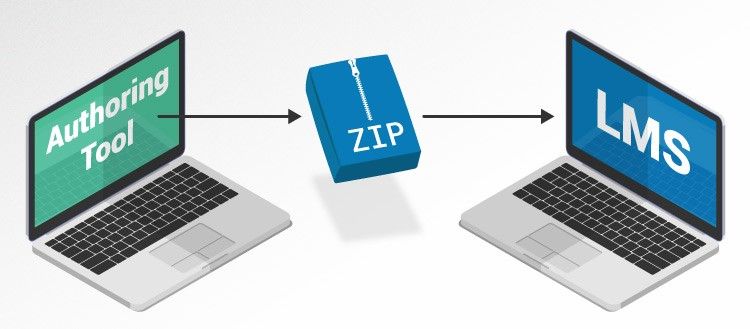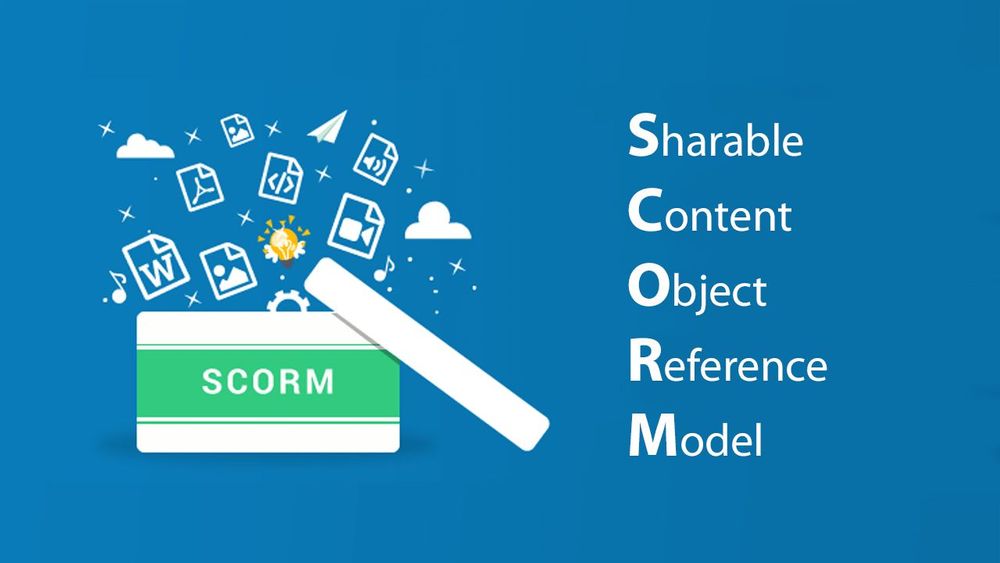What is SCORM?
Simplest explanation of SCORM would be, that SCORM is a set of standards used in an eLearning industry for two main purposes:
- creating learning courses
- creating Learning Management Systems (LMSs) which are compatible with learning courses
SCORM stands for “Sharable Content Object Reference Model”, a definition which can be diveded into two parts:
- Shareable Content Object or SCO: This describes the elements of the SCORM package that can be reused across multiple tools and platforms. Once the various elements of the package are SCORM compliant, the content should be understood by all compatible learning platforms and tools. They are the “assets” used in the course.
- Reference Model: This part of the term tells you that SCORM is a standard, the specification for which can be understood and applied in a consistent way by all who work in the eLearning industry. These are the “rules” everyone follows.
Main reason for using these standards is that courses created upon these standards can be easily used in any LMS which is also created by following SCORM standards. As every standards SCORM standards change through the time so at this point we have follwing SCORM standards (from oldest to the newest one):
- SCORM 1.1
- SCORM 1.2
- SCORM 2004 2nd Edition
- SCORM 2004 3rd Edition
- SCORM 2004 4th edition
A word about Learning Management Systems
Anyone who knows what are Content Management Systems (CMS) can easily understand Learning Management systems (LMS). Both things represents softwares which are used for managing. CMSs are used for managing content of web applications, while LMSs are more about managing courses and learning materials for the users. Moodle is currenly biggest open source LMS software, but of course there are also commercial ones (e.g. Nectar, eFront...).
Interaction between SCORM courses and LMS

Today we can use different tools to create SCORM compliant courses (e.g Articulate Storyline 3), and those tools make creating such courses quite easily. After course is created by one of such tools we can publish that course which outputs ZIP file which contains all neccessay data for those courses to be used in LMSs.
Of course such courses can be used everywhere but in order to track progress of users which are taking those courses we need LMSs which, as mentioned previously, are also SCORM compliant, and can interacte with SCORM compliant courses. Interaction between SCORM courses and LMSs means monitoring user interaction with the course through the LMS.
Such monitoring allows storing monitored data into database so that LMS is aware of every progress which every user made in the system. For example LMS holds and works with following data:
- Which courses user already started
- How much time user spend on each course he/she started
- How many times user tried to complete the course
- What is the last page user visited before closing the course, so that user can continue where he/she was last time before closing the course
- What were the answers which user gave to the questions inside the course
- Did user completed the course
- What is the status of completed course (it can be passed, completed, incomplete or failed)
- If course has final exam, did user scored enough points, in order to pass the exam etc.
Conclusion
As in any industry SCORM as standards help whole eLearning industry to standardize the way how learning courses are made and behave, and how they should interacte with LMSs to provide best experience and best results for the end users.

